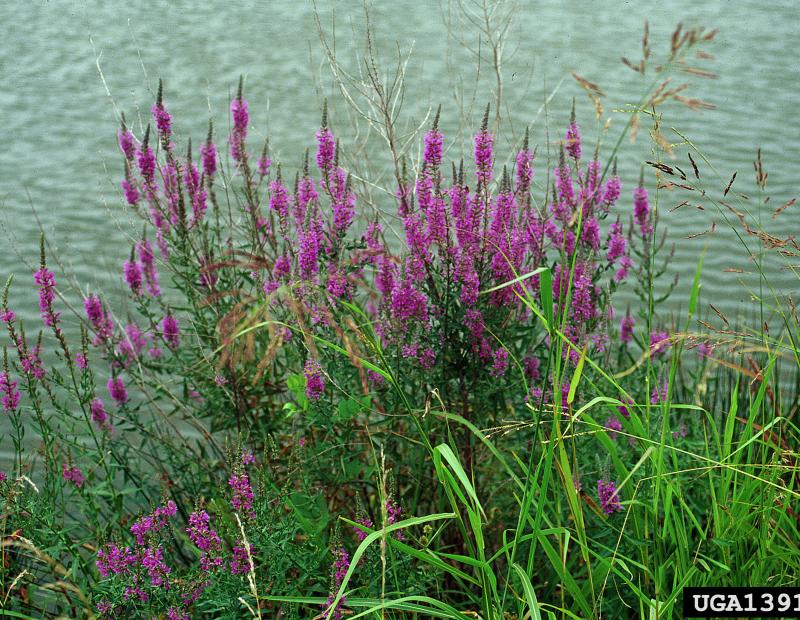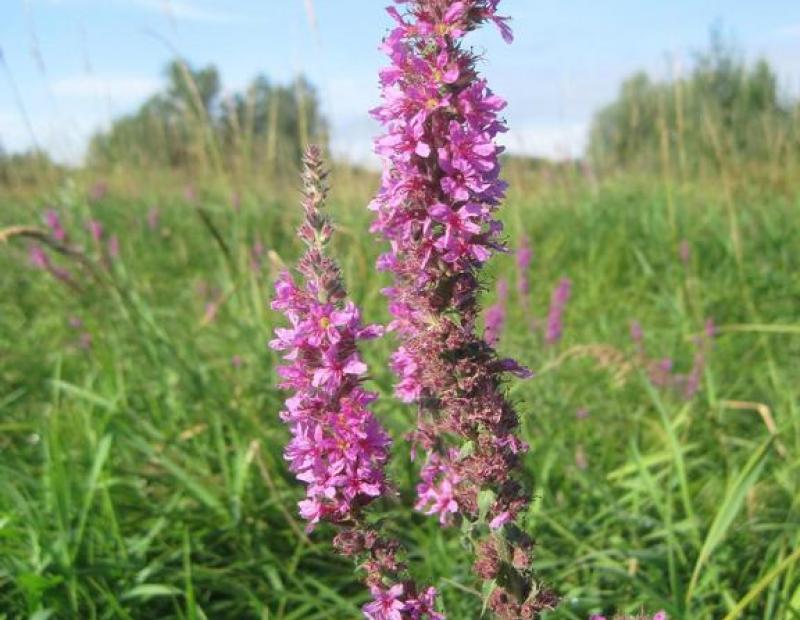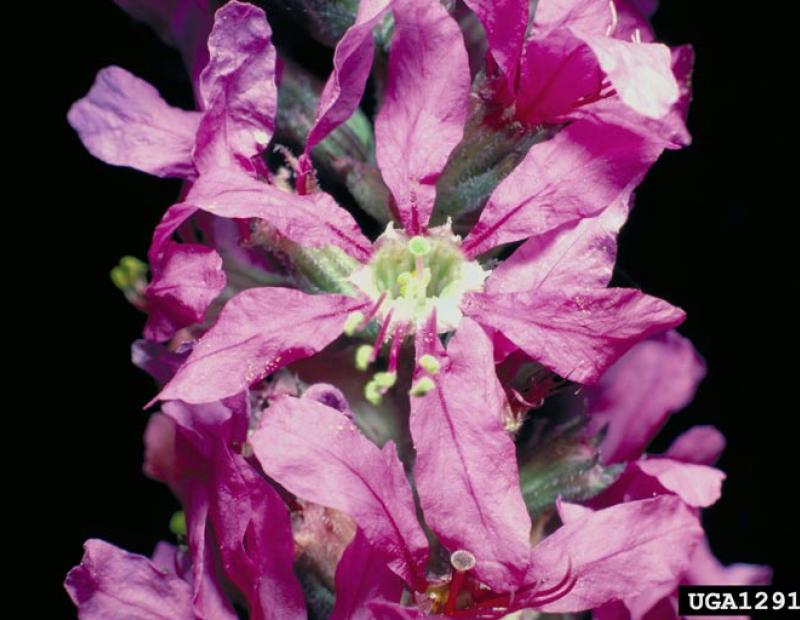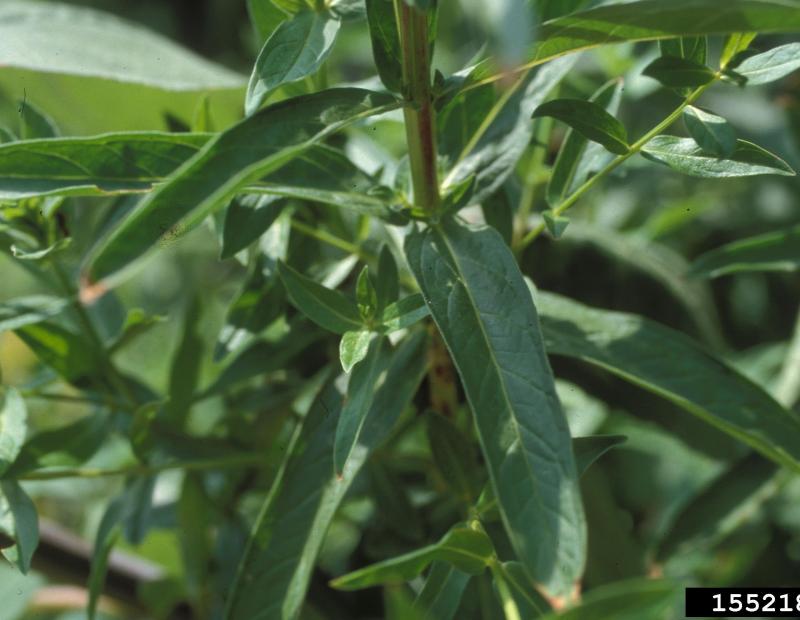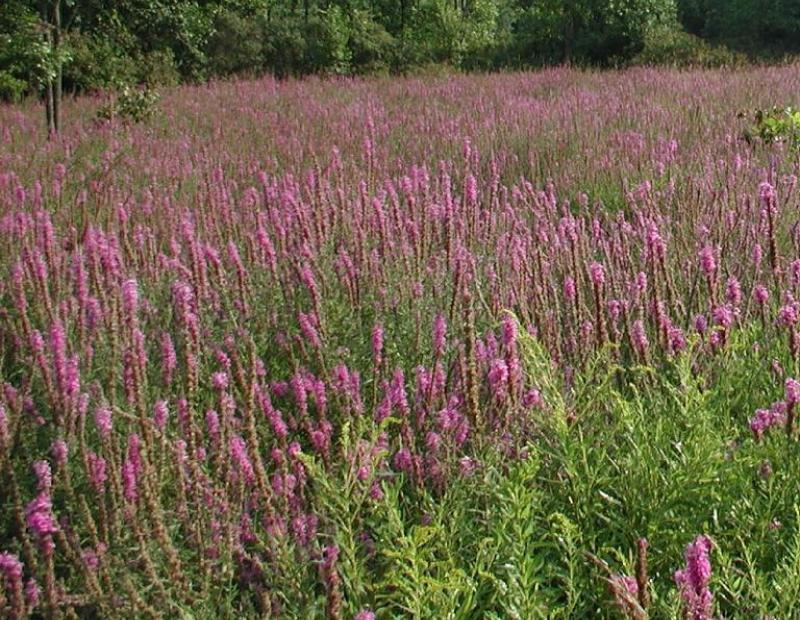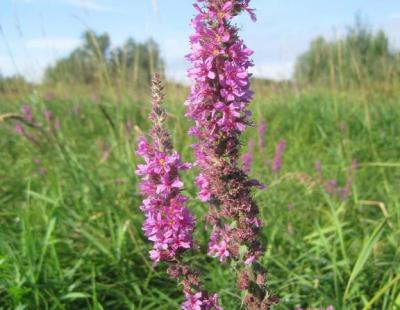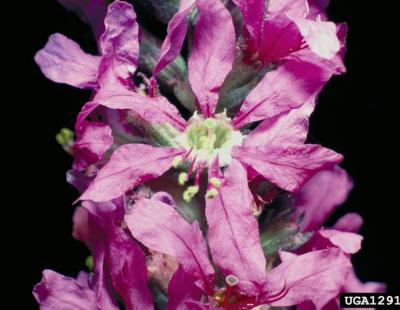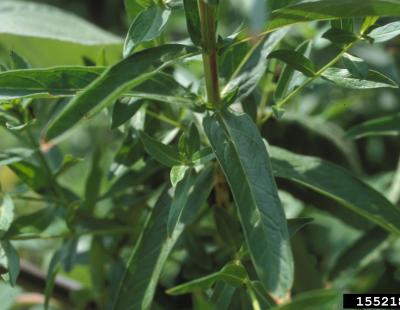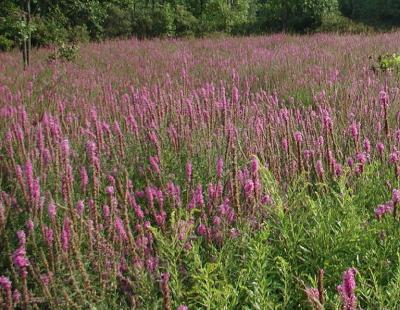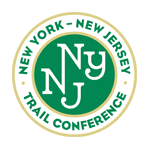- Terrestrial Plants
Purple loosestrife can completely dominate wetlands, forming vast monotypic stands. The stands prevent the growth of native plants, which may have an indirect effect on native wildlife that may not use the loosestrife as effectively as native plants for cover and food. By forming in dense stands, these plants can clog waterways, causing issues for commercial and recreational use of these areas. Each plant can produce 2.5 million seeds. These seeds can persist in the seed bank for years, even after the plants have been eradicated from an area, making them very difficult to manage. The seeds are transported long distances through water or becoming attached to waterfowl. This species may hybridize with native loosestrife, which can after time deplete the gene pool for this species.
Lythrum salicaria is native to central and southern Europe, Great Britain, and parts of Russia. It was first introduced into the United States in the early 1800's. By 1900, a majority of populations were between Massachusettes and New Jersey. It is figured to have been initially introduced by either being on a ship's ballast from Europe, or attached to sheep that were transported. It became a popular species to plant for beekeeping, its ornamental value, and for medicinal uses. It has been documented in every state excluding six within the United States.
Purple loosestrife is an herbaceouos wetland perennial that can grow 1.5 to 5 feet tall. The leaves on the plant are opposite or in whorls of three. They can be pubescent or glabrous. They are lanceolate to linear in shape. The larger leaves can be cordate or clasping at their bases. The flowers bloom from July to September and vary between purple, magenta and pink and have 5 to 7 petals. The hypanthium is twice as long as the sepals.
Purple loosestrife can be found in a variety of locations, including coastal grasslands, herbaceous wetlands, lakes, ponds, rivers, streams, shrub wetlands, wet meadows, yards or gardens. This species is most prominent in locations that have moist soils. It grows best in shallow waters, but doesn't grow as prolifically in deep water environments. It is widespread through the Lower Hudson region.

